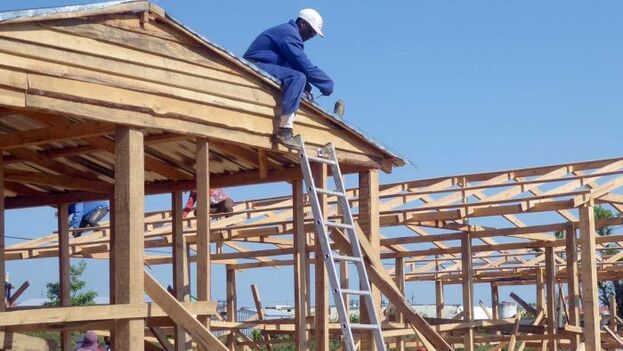
14ymedio, Havana, January 8, 2024 — On Sunday, Cuba’s Ministry of Construction added Granma to the list of provinces that failed to meet the government’s 2023 housing goals. According to official news outlets, only 737 (or 45%) of the planned 1,636 houses were built. Provincial officials blamed the “low manufacturing output” and public resistance to “alternative materials.” They admit, however, that the real problem is reduced deliveries of steel and cement, products that are not available locally.
Officials told the newspaper Granma that only 184 (28%) of the homes the ministry had planned as part of its housing initiative were actually built. For their part, state-owned companies, which invest a portion of their profits in workers’ housing, managed to build only 553 (57%) of the proposed 965 homes.
The biggest delay in the province, however, involves state financial and material subsidies for families in precarious housing situations. It was estimated that this aid would have allowed construction of 409 units. Instead, only 84 houses (15%) were built.
Local development projects, Tejeda complained, have not focused on the use of “alternative” building materials
Michel Tejeda Acuña, the provincial government’s coordinator, explained that, in addition to a shortage of cement and steel, the “limited” prodution of provincial companies also makes it difficult to carry out the plan. Furthermore, regulations also preclude local materials such as stone, wood or clay from being used.
Local development projects, Tejeda complained, have not focused on the use of “alternative” building materials either, nor do they take into account the region’s capabilities. Only one of these projects, which was managed by private individuals and built in Bayamo from clay bricks with help from the state, seems have come close to meeting expectations.
Privately owned, and often illegal, artisan businesses have for years provided customers with inexpensive building materials they cannot find through state sources. The chronic shortage of construction materials has led many people to substitute bricks for concrete blocks, something the state itself has


